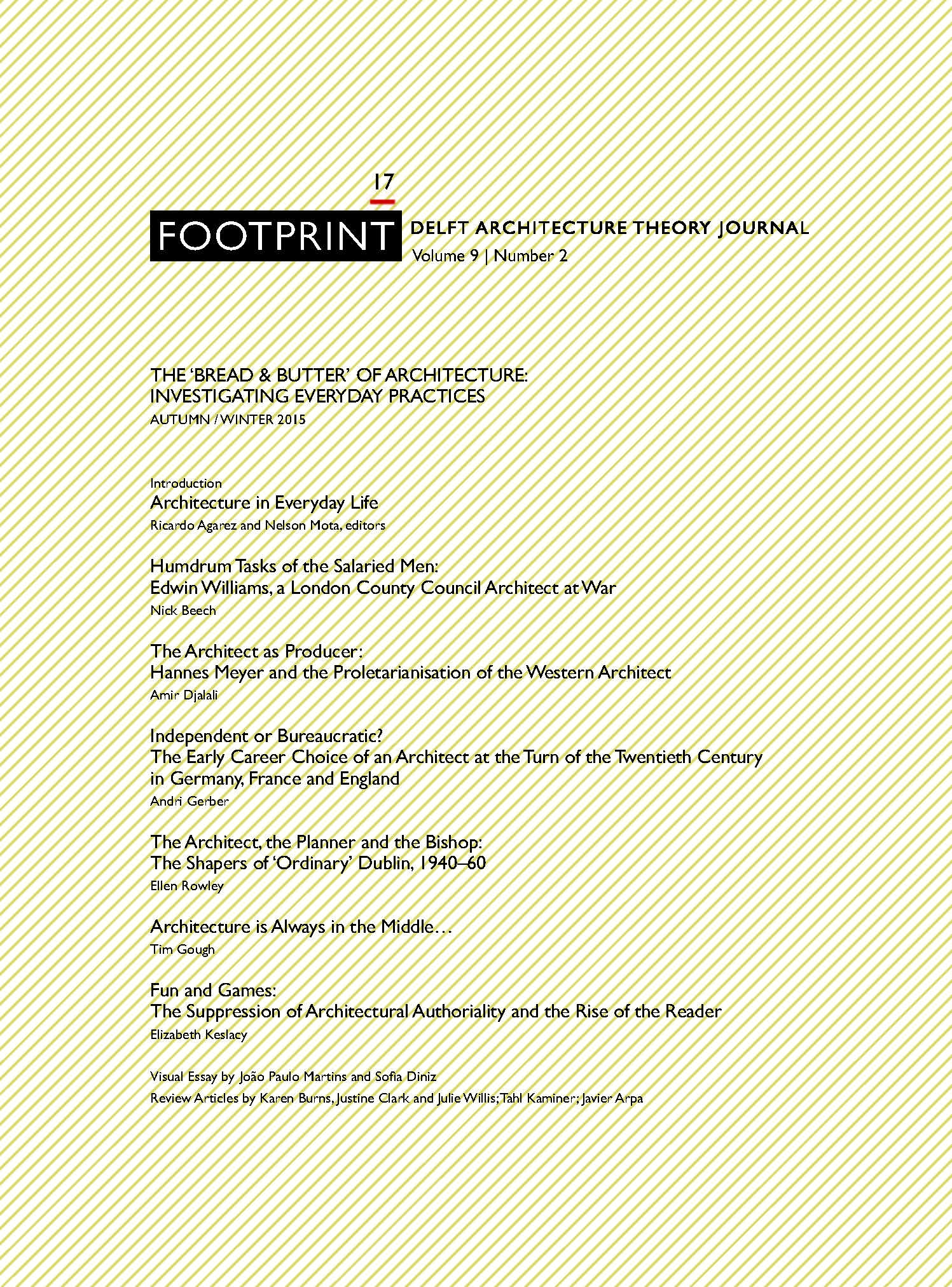The Elusiveness of Welfare-State Specificity
DOI:
https://doi.org/10.7480/footprint.9.2.985Abstract
Review of Architecture and the Welfare State, edited by Mark Swenarton, Tom Avermaete and Dirk van den Heuvel (Oxon and New York: Routledge, 2015).
Incomprehensibly, the relation of architecture to society is, on the one hand, a trivial fact, and, on the other, a perplexing assumption. Trivial, because the evidence of the tight relationship is ubiquitous, screaming its existence from the tops of skyscrapers, from the basements of gloomy panopticon prisons, and from the doorsteps of Levittown houses. Perplexing, because, despite of such an abundance of evidence, the actual form of such a relationship remains contested and, mostly, obscure.
This review article will interrogate the relation of architecture to society via the recently published anthology Architecture and the Welfare State, edited by Mark Swenarton, Tom Avermaete and Dirk van den Heuvel. The anthology postulates that a rigorous correlation can be established between architectural design and the welfare state. The review article, in turn, posits two questions to the anthology: what is specific about the welfare state which differentiates it from other societies of the era, and how is a rigorous correlation of a specific form of architecture to the welfare state established, beyond limited notions such as zeitgeist?
Downloads
Published
Issue
Section
License
- Authors retain copyright and grant the journal right of first publication with the work simultaneously licensed under a Creative Commons Attribution License that allows others to share the work with an acknowledgement of the work's authorship and initial publication in this journal.
- Authors are able to enter into separate, additional contractual arrangements for the non-exclusive distribution of the journal's published version of the work (e.g., post it to an institutional repository or publish it in a book), with an acknowledgement of its initial publication in this journal.



